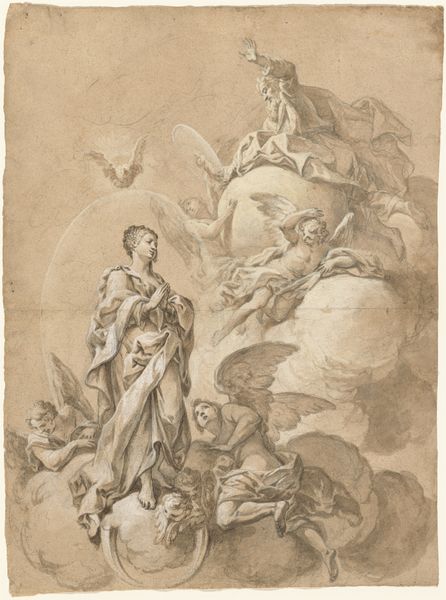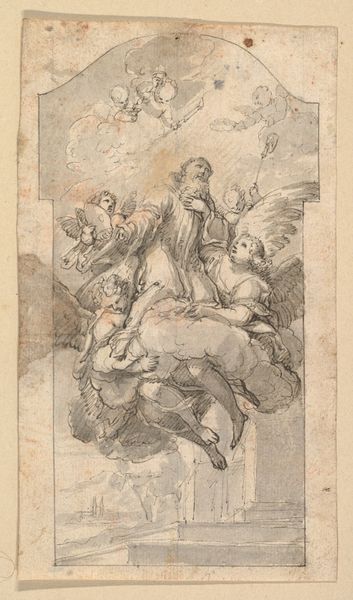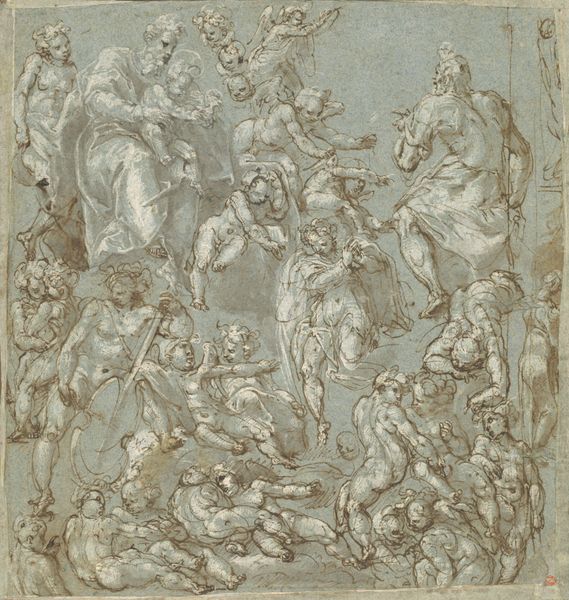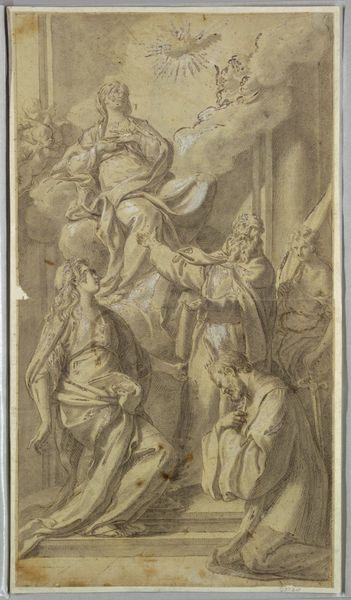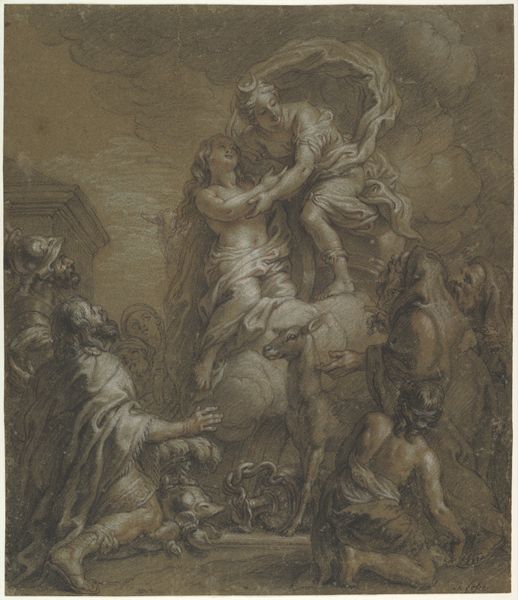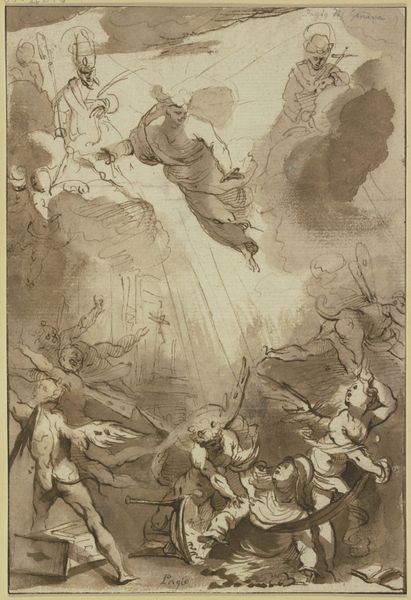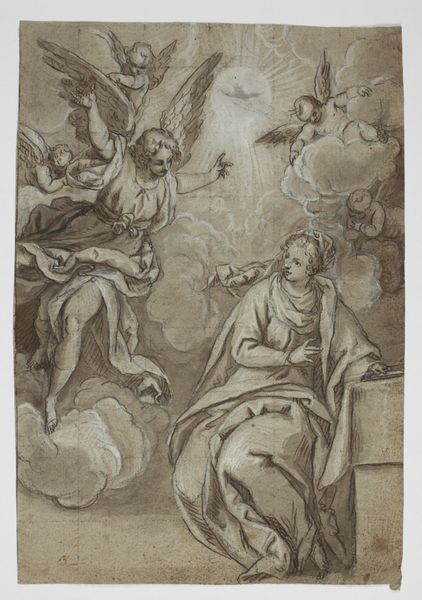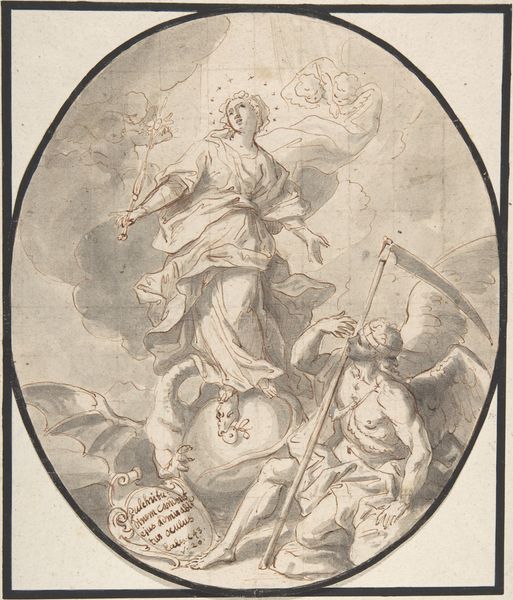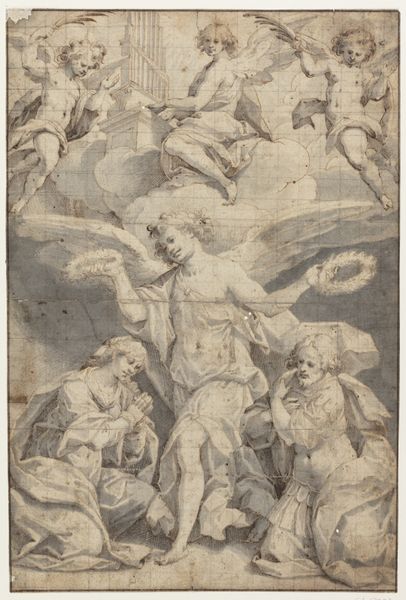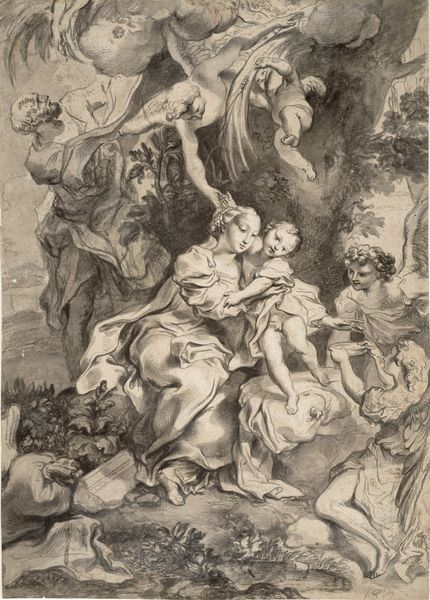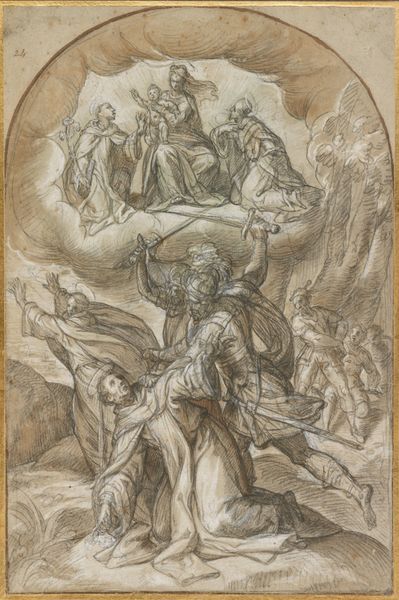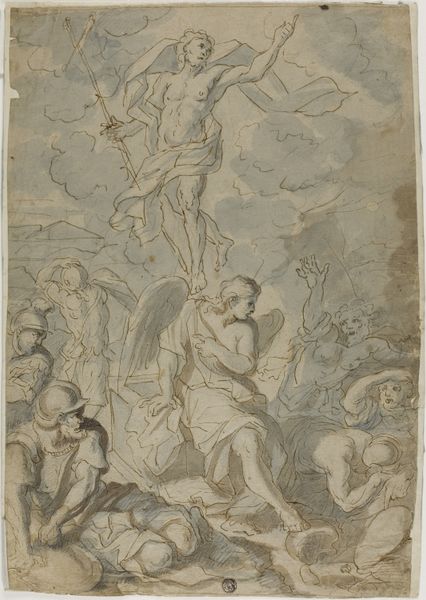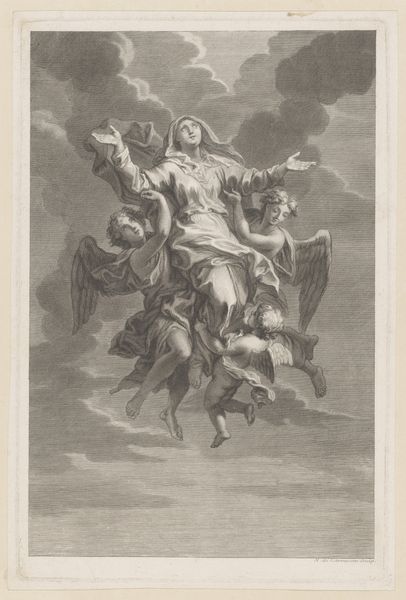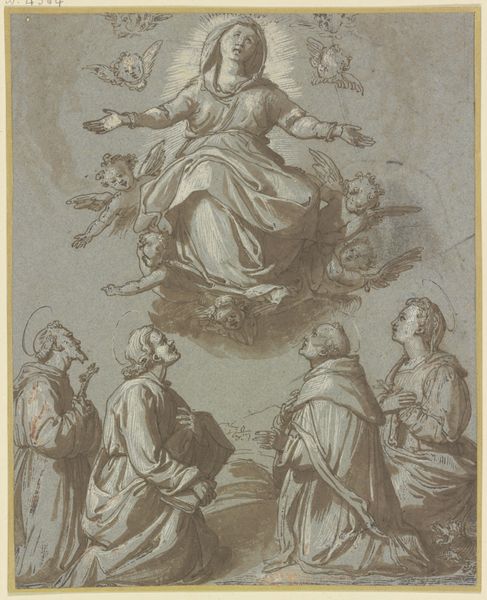
drawing, watercolor
#
drawing
#
water colours
#
allegory
#
baroque
#
figuration
#
watercolor
#
history-painting
Dimensions: sheet: 33 x 19.1 cm (13 x 7 1/2 in.)
Copyright: National Gallery of Art: CC0 1.0
Curator: We're looking at Johann Georg Bergmüller's "The Immaculate Conception," a watercolor drawing from the 1740s. Editor: It evokes a feeling of serene elevation. The pale blues and whites lend a ethereal quality. There's a delicate balance, a weightlessness despite the density of figures. Curator: Indeed, the composition, while intricate, guides the eye upward towards the Virgin Mary. Consider the pyramidal arrangement and the use of contrasting values to create depth, especially in her robes and the clouds surrounding her. Bergmüller utilizes line to define form while maintaining a light, airy feel appropriate for this type of sacred scene. Editor: How interesting! Beyond the surface, I'm struck by its visual language. The subject matter is, of course, intensely charged. Looking at this piece through a social and political lens, can you describe how it operates within a certain time and a space? Curator: Absolutely. Remember, Baroque art often functioned as propaganda, reinforcing the power of the Church and the ruling class. "The Immaculate Conception" wasn’t just a devotional image; it promoted specific theological doctrines amid the complex religious politics of the 18th century. Its imagery reflects the historical tensions between religious belief and state power. Editor: It becomes quite thought-provoking in this sense! To what extent, you could also analyze the distribution, sale, or exhibition of religious art back in the Baroque era? Was there any regulation from institutions for the style to employ to send the message clearly to the public? Curator: Regulation came in subtle forms, usually exerted by powerful patrons. Think of noble families who commissioned artworks for public or semi-public spaces. The artwork became a visible assertion of social order, underscoring class distinction but also subtly encouraging piety among the broader population. Editor: Interesting! It is nice to recognize the ways in which color, light, form and perspective collaborate. When seeing such historical examples from a formalist perspective, you see clearly that visual elements carry the meanings and narratives, but the real messages always come in a certain time and a space. Thank you for such insight, a new point of view from a time capsule! Curator: My pleasure. Looking at Bergmüller's piece again, I’m also impressed with the harmony between aesthetic considerations and the message the artist sought to transmit. It invites not only the observer’s formal considerations but also thought, speculation, and interpretation.
Comments
No comments
Be the first to comment and join the conversation on the ultimate creative platform.
